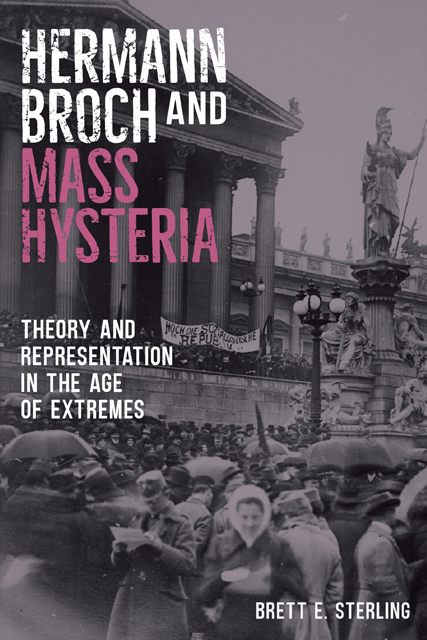Book contents
- Frontmatter
- Dedication
- Contents
- Acknowledgments
- List of Abbreviations
- Introduction
- 1: First Encounters, 1918–1929
- 2: The Power of Literature
- 3: The Mass Takes Shape: Literary Representations
- 4: Theory and Its Discontents: The Massenwahntheorie
- 5: The Threshold of Experience: Die Verzauberung
- Conclusion
- Bibliography
- Index
Conclusion
Published online by Cambridge University Press: 11 January 2023
- Frontmatter
- Dedication
- Contents
- Acknowledgments
- List of Abbreviations
- Introduction
- 1: First Encounters, 1918–1929
- 2: The Power of Literature
- 3: The Mass Takes Shape: Literary Representations
- 4: Theory and Its Discontents: The Massenwahntheorie
- 5: The Threshold of Experience: Die Verzauberung
- Conclusion
- Bibliography
- Index
Summary
On the afternoon of January 6, 2021, as this book was being completed, a crowd of right-wing extremists assaulted and invaded the United States Capitol building. Motivated by conspiracy theories about election fraud, secretive international cabals, and messianic cults of personality around both the outgoing president Donald Trump and an anonymous figure known to adherents only as Q, the crowd had organized to prevent the certification of election results by the United States Congress, results that showed Trump to have lost the presidential election to Joe Biden.
Following a rally held in front of the White House, during which now former president Trump suggested that attendees should march the several blocks to the Capitol building in an effort to “take back our country,” several thousand people began to assemble around the seat of the American legislature and clash with police. As the crowd gathered, some erected makeshift gallows, while others declared their intention to find and murder then-Vice President Mike Pence, journalists, and other perceived “traitors.” Among the assembled were numerous members of white supremacist groups, who carried with them a proliferation of racist, anti-Semitic, and Nazi imagery. In just 45 minutes, rioters scaled walls and were able to break through windows and doors to enter the building, forcing the evacuation of some politicians while others sheltered in place. Once inside, rioters combed the halls looking for politicians, ransacked and looted the offices of government officials, and posed for photos in the Senate chambers. After several hours, police were able to clear the Capitol building and disperse the crowd from the premises using flash-bang grenades, chemical irritants, and riot dispersal techniques. But by the evening, five people were dead and American democracy was dealt a shocking symbolic blow.
The events of January 6, 2021 made a thunderous demonstration of the continued relevance of Hermann Broch as a theorist of mass hysteria. His concern that democracy is an inherently fragile institution susceptible to defeat by the insidious charms of fascism was displayed vividly in the attack on the Capitol. Further, the event provides a compelling and tangible argument for the potential conceptual accuracy of Broch’s Massenwahntheorie.
- Type
- Chapter
- Information
- Hermann Broch and Mass HysteriaTheory and Representation in the Age of Extremes, pp. 209 - 214Publisher: Boydell & BrewerPrint publication year: 2022



